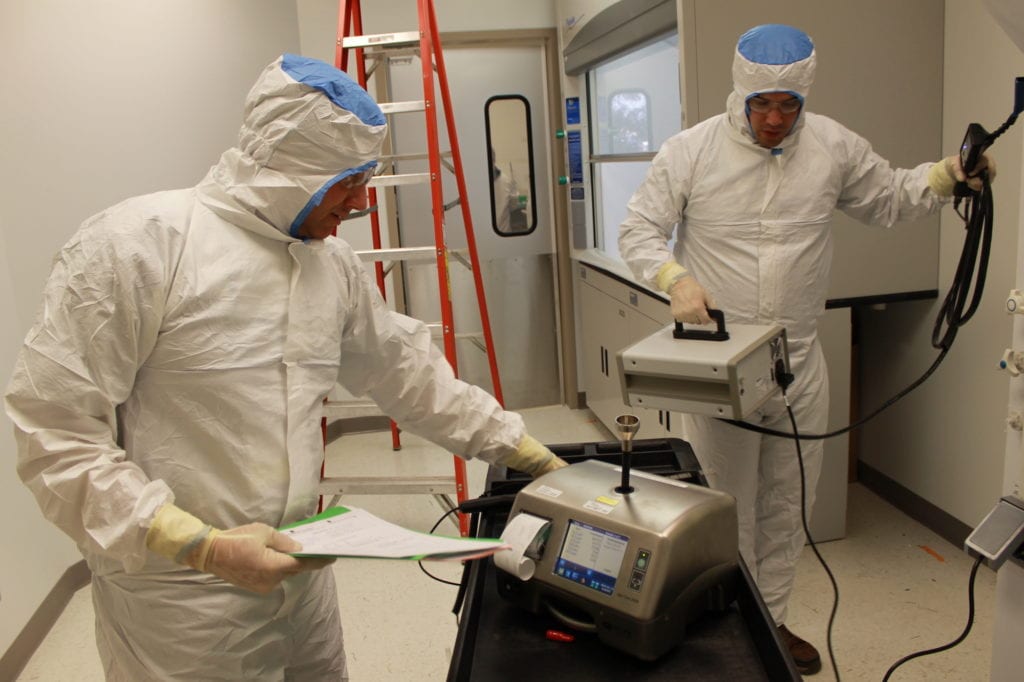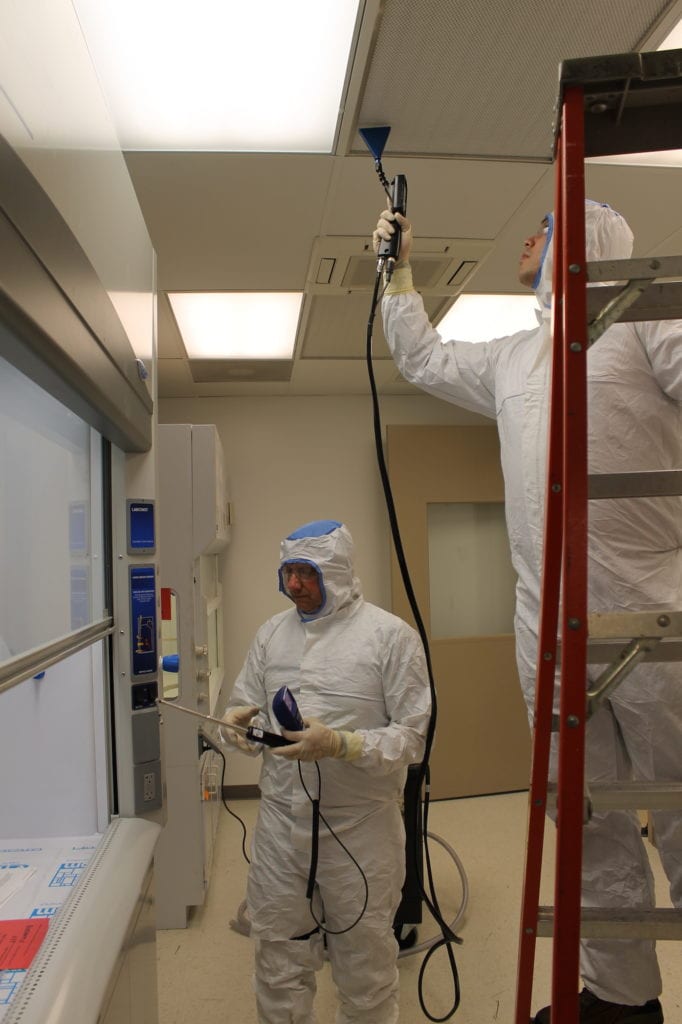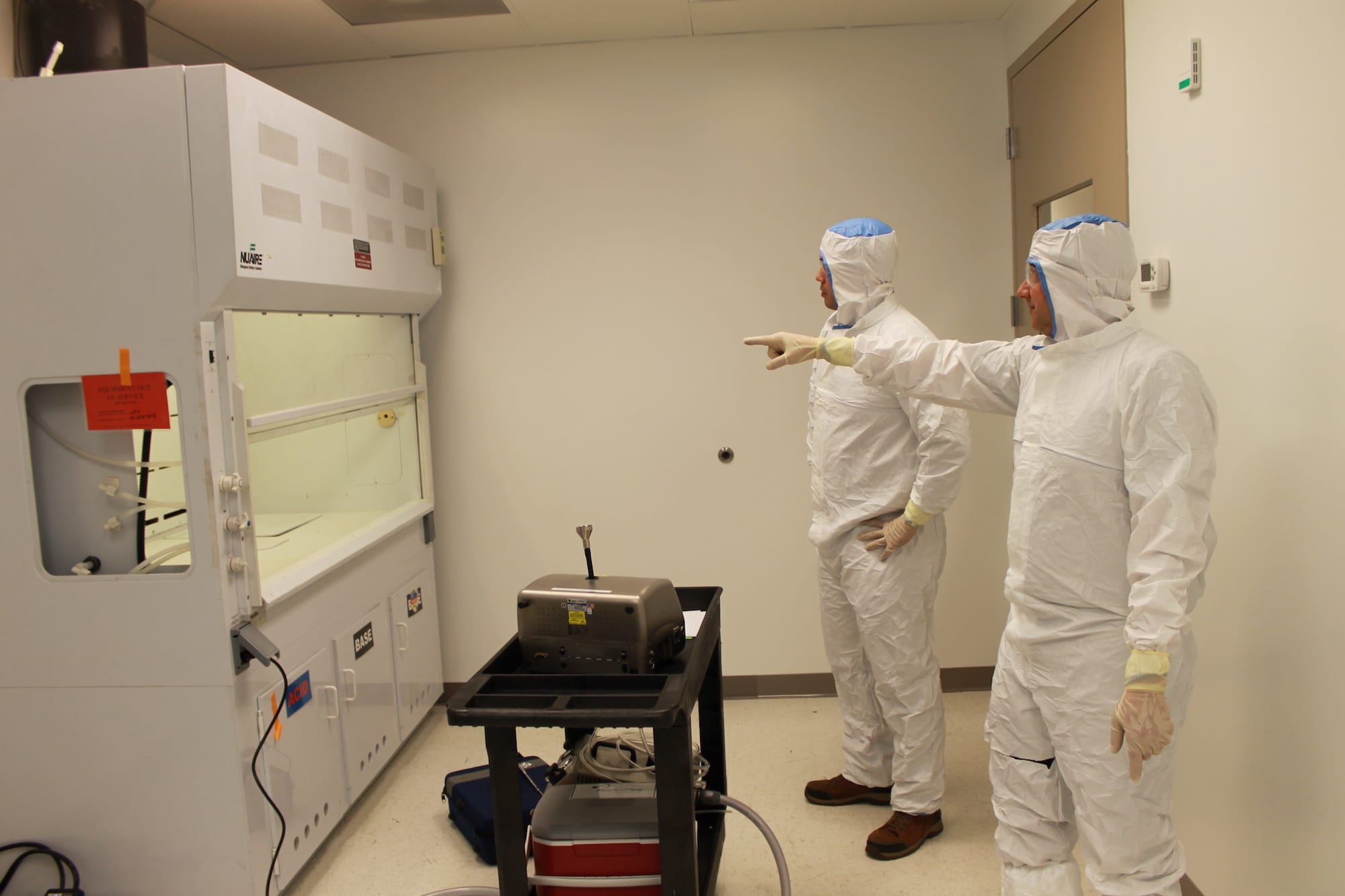Next time you’re in the mountains, take a deep breath. What you think of as clean air filling your lungs is far from it. Within a cubic meter of typical outside air are millions of particles of dust, pollen, dander, smoke and bacteria.
These microscopic bits of matter normally don’t bother us (unless you have allergies). But if your business is creating silicon chips, pharmaceuticals, precision machinery and other products that need to be made with exacting tolerances, you need a clean room where those particulates are reduced to a minimum.
The Boston Watch Company is noted for creating the first clean environment to manufacture its time pieces in 1850. Unable to stop dust from the unpaved streets of congested Boston, the company moved to the rural town of Waltham, Mass., where it could could reliably build watches in a clean factory free of outside contaminates.
Today there are hundreds of thousands of clean rooms around the globe, ranging in size from small glass cabinets where workers can fit their gloved hands to do a job to giant warehouses used for massive aerospace projects. And to make sure those spaces actually stay “clean,” manufacturers often call a technician like Mike Turnure.
It Takes a Lot of Work to Be This Clean
As facilities qualification program manager at Minneapolis-based Pace Analytical, Turnure manages a team of technicians who drive or fly to clean rooms around the U.S. to make sure they’re up to the job. “It’s detail-oriented work,” he says. “You can’t just run in, take some measurements, make a few repairs and leave. There can be a great deal of planning well before you start.”

All equipment used must be carefully cleaned before it is moved into the clean room. Image: Pace Analytical.
Clean rooms have different contamination thresholds depending on what they’re used for. For the manufacture of micro electronics the standard is generally known as Class 3, which is the equivalent of finding a single .5 micron particle (about one average speck of dust) in a cubic meter of air. Clean rooms typically need regular certification that they’re meeting a standard, which is where Tunure’s work comes in.
Depending on the size and complexity of the job a Pace team may consist of one to six techs. The firm sends its techs around the U.S. and the Caribbean. For clean rooms near Minneapolis, techs are dispatched from headquarters in company vans. For distant jobs, the team ships standard-issue tools (screwdrivers, wrenches, ladders and other tools of the trade) and its expensive testing machine in heavy-duty cases.
When they get to a job site Turnure’s team can’t just haul out their gear and get to work. Keeping the clean room “clean” is the objective, so the techs need to follow some anti-contamination procedures. First, they remove their tools and instruments in a specified equipment transfer room next to the main clean room.
“This is a space with filtered air and we wipe down and clean anything we’re bringing into the clean room there,” Turnure says. “There’s a line on the floor and after the gear is cleaned, you move it across the line where you can take it into the clean room work area.”
You can’t just run in, take some measurements, make a few repairs and leave. — Mike Turnure
After the tools are inside the techs go to the gown room, where they don clean low-particulate clothing, booties and head coverings. Logically, techs can’t bring food, drink or gum into the clean room area, and makeup and jewelry are generally forbidden. Smart phones depend on the client’s rules.
“Sometimes they’ll have plastic bags for your phone, other clients will just request that it be wiped down. And then some will just ask that you keep it outside of the clean room.”
From there the techs move into the clean room area, retrieve their equipment and get to work. The main instrument used is the airborne particle counter, which is set on a rolling cart and moved to various parts of the clean room to measure particulates. Other monitors check for room temperature and humidity.

Clean room techs monitor the air coming through HEPA filters for contaminants as small as 0.3 microns. Image: Pace Analytical.
The most critical part of a clean room environment is the HEPA (High Efficiency Particulate Air) filter, which traps damaging contaminates. Pumps circulate into the clean room through high-tech filtering media at a slightly higher pressure to keep contaminants outside.
“These aren’t like the HEPA filters you get at a hardware store to use in your home,” Turnure says. “These are high performance, certified pieces of equipment with records showing where and when they were manufactured in case there’s a problem.”
As part of a clean room certification, the filters are tested to make sure they’re operating at full efficiency by seeing how they perform against what’s known in the industry as a “0.3 micron particle cloud,” more commonly known as “smoke.” Techs then use a spectrometer in the clean room to see if any portion of the smoke particles get through.
In Industrial Manufacturing, Cleanliness Is the Name of the Game
Techs are trained to make small repairs, such as leak fixes around doors, windows and crevices with caulking guns and can replace filters as needed and make recommendations to improve the environment. Clean room maintenance is generally considered to be relatively safe. When inspecting air ducts or small areas a tech may come upon an insect nest, and there’s always some risk when working on top of ladders, but injuries are generally few.
The biggest headaches occur when there’s miscommunication about a clean room inspection. “When we’re doing a smoke test in the air ducts we’ll let the client know and we always ask that they turn off their duct smoke detectors during a test,” Turnure says. “Sometimes they’ll say, ‘We don’t have smoke detectors in our ducts.’ So we go ahead with the test and sure enough, a building-wide fire alarm goes off that disrupts everyone’s day. We just try and get them to double check because an emergency evacuation is no fun.”
Most clean room techs have some background in HVAC work or construction, and starting pay is in the $15 to $25 per hour range.
“You need math skills and an ability to make quick calculations. The best techs are detail oriented since they’re working in areas where there’s little room for error. A ‘dirty’ clean room can be expensive to fix,” Turnure says.
Overall, Turnure believes the job is worthwhile. “When you look at all of the amazing products we have today because of clean rooms, there’s a great deal of satisfaction in feeling your work matters. There aren’t many jobs like that.”


One should find a company who can install an eco-friendly modular cleanroom that satisfies all your needs or upgrade your existing cleanroom to a more efficient class.